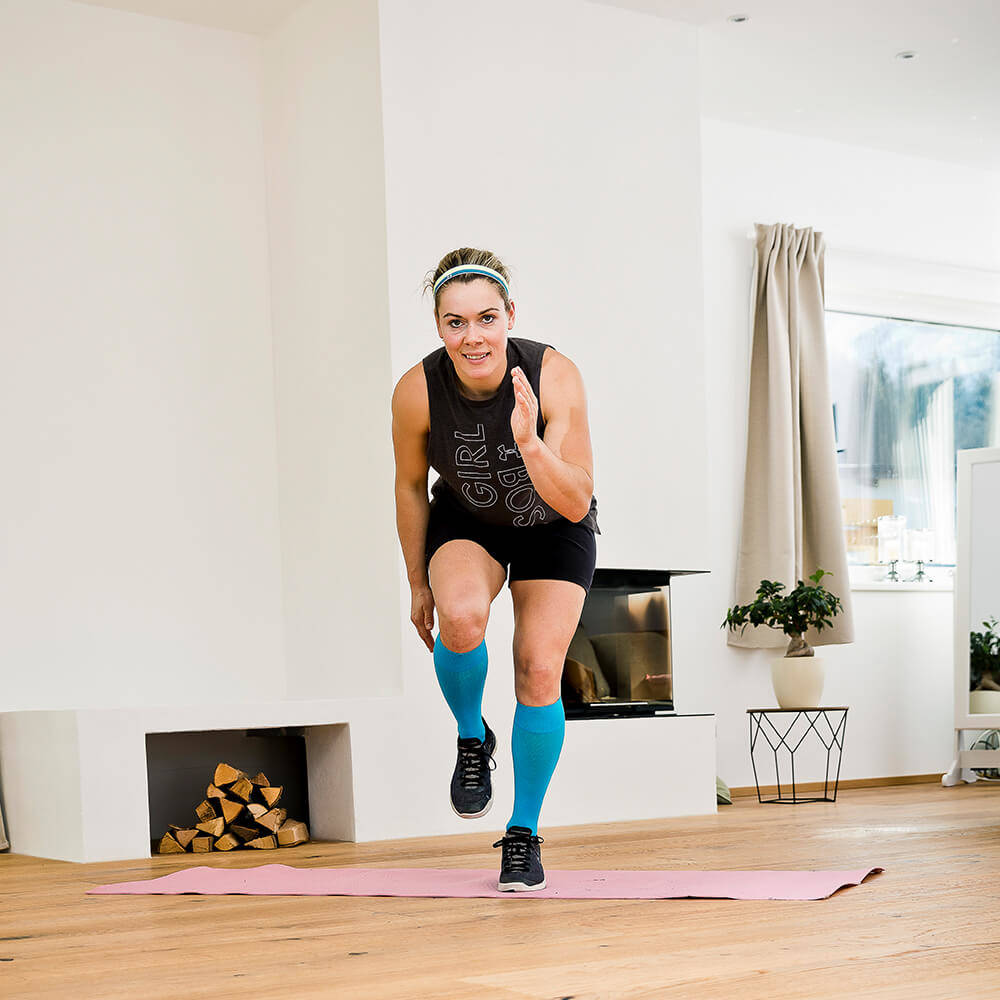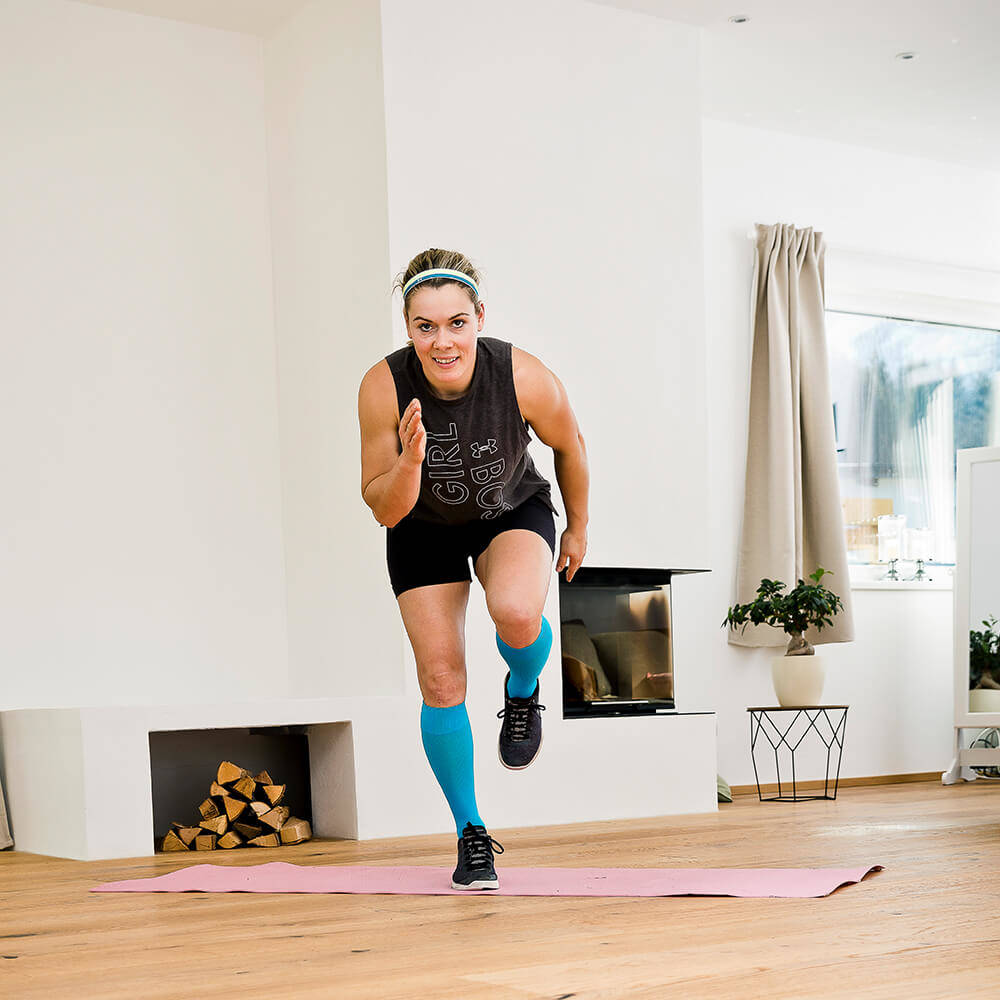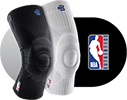Whether you’re new to skiing or snowboarding or are shifting from one to another, our guide walks you through all the gear you’d need.
Skiing is a popular way for many people to stay active during the winter season, but long days on the slopes can result in soreness or injury, regardless if you’re a new or experienced skier. Because of this, it’s important to have a skiing workout routine as part of your lead-up to the winter season.
With help from former Ski Cross World Champion Andrea Limbacher, we’ve chosen four bodyweight exercises tailored to skiers to help improve stability, flexibility and balance.
Plank
Performed without equipment, the plank is a perfect exercise to begin any workout because it utilizes your entire body. It strengthens your core, upper and lower body and improves posture and balance, which is important when skiing.
For additional back stability, Bauerfeind’s Sports Back Support (worn below) is a lightweight and breathable brace that encourages core muscle activation while enhancing proprioception.
To do this:
- Place your forearms on the ground with elbows underneath your shoulders.
- With your feet shoulder-width apart, lift your body while keeping your legs and spine straight.
- Engage your core and glutes. Breath slowly.
- Once stabilized, raise your right leg for three seconds while keeping your body horizontal to the ground.
- Lower your right leg, then raise your left arm for another three seconds while keeping your body straight. Repeat with the opposite arm and leg.
- Perform four sets for 20-30 seconds or as your ability allows.
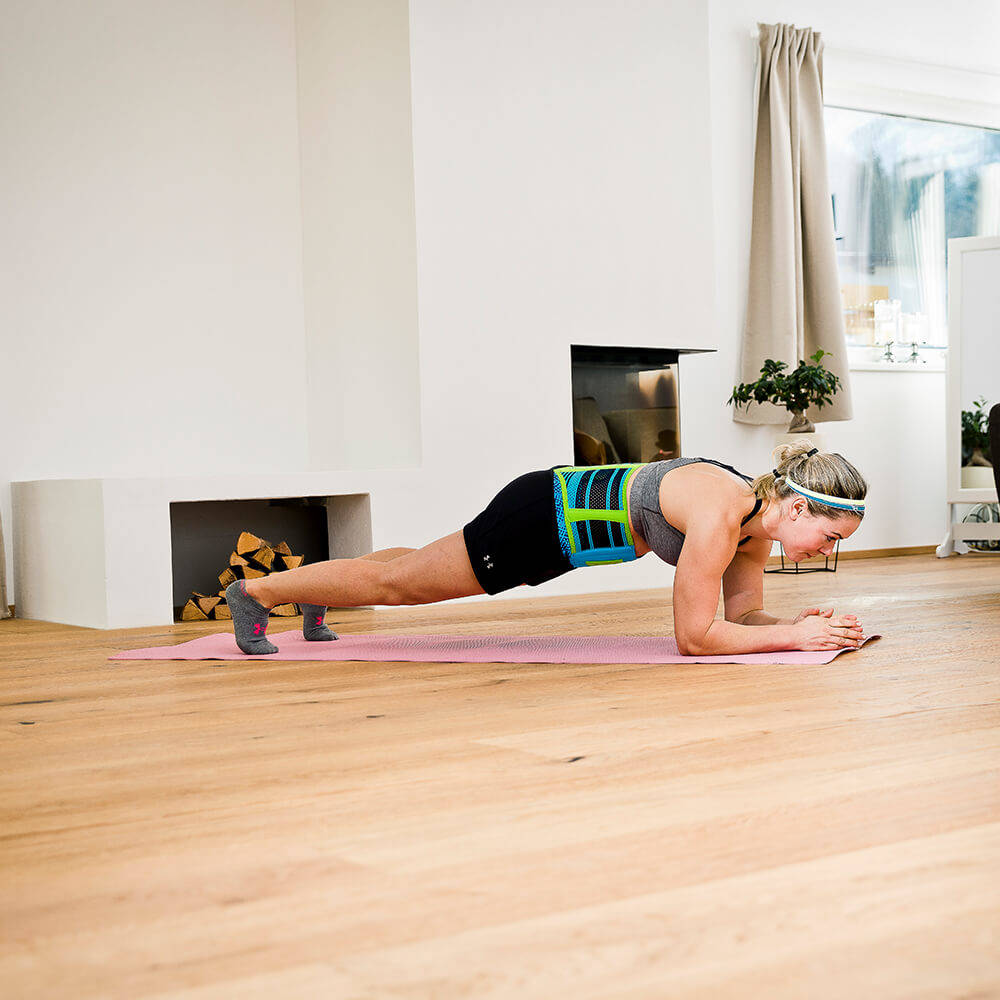
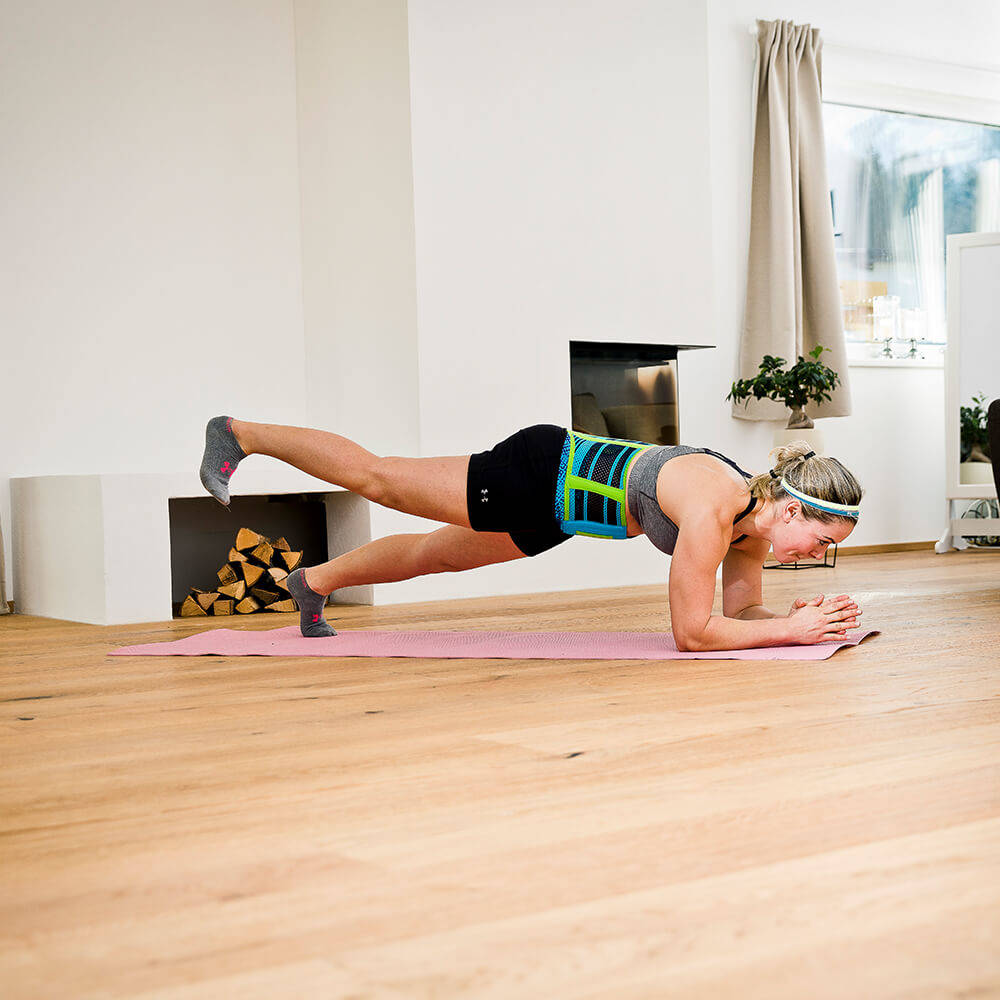
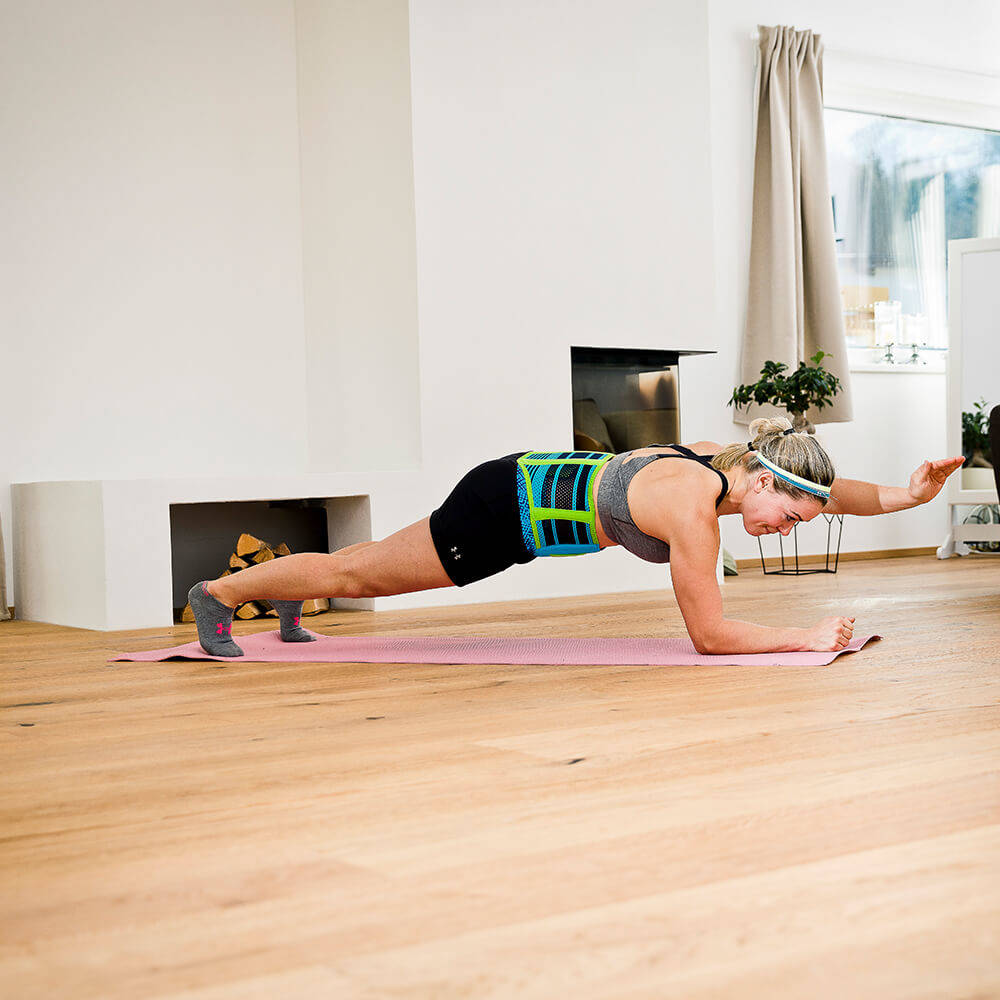
Side Plank
While the traditional plank targets your frontal core muscles, side planks target your obliques, as well as gluteal and lower-back muscles. This is important for skiers because it allows for a more stable and effortless upper-body rotation while maneuvering your way down the slopes.
In this exercise, Andrea Limbacher is wearing our Ski Ultralight Compression Socks to vitalize the calf muscles and improve circulation. The Sports Wrist Straps stabilize her wrists during the exercise.
To do this:
- Lie on your side using your left forearm and foot to support your body off the ground.
- Keeping your spine and legs straight, lift your right arm vertically above your head.
- Lift your hips and hold.
- Advanced: Raise your right leg and hold for 30-60 seconds or as your ability allows.
- Rotate to your other side and repeat. Complete with one to two more sets.
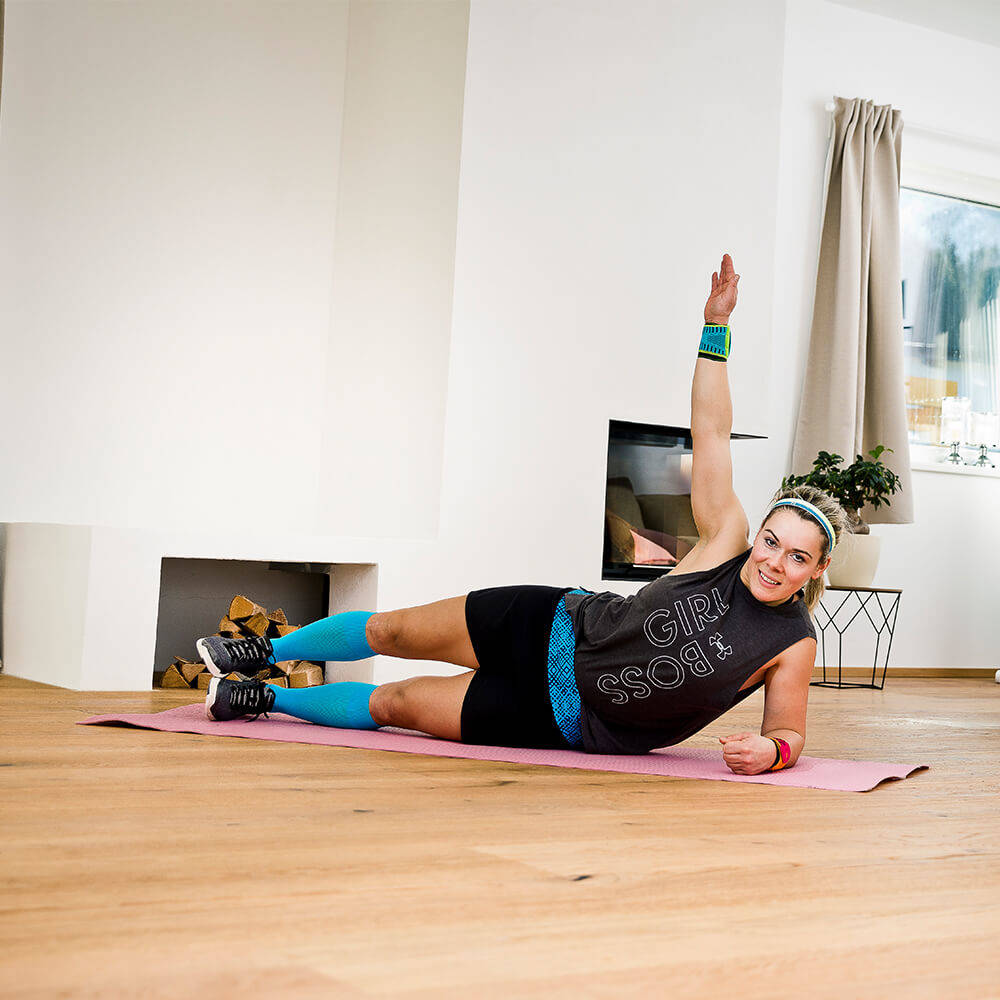
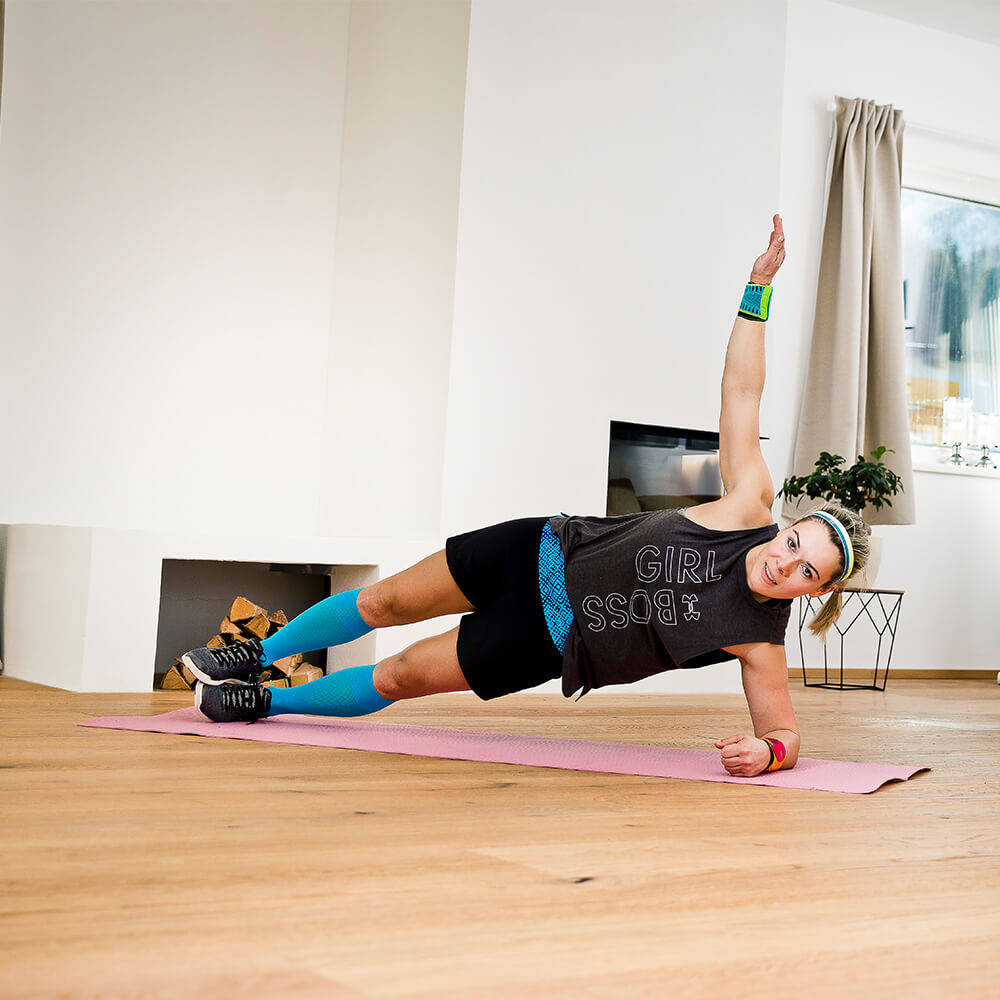
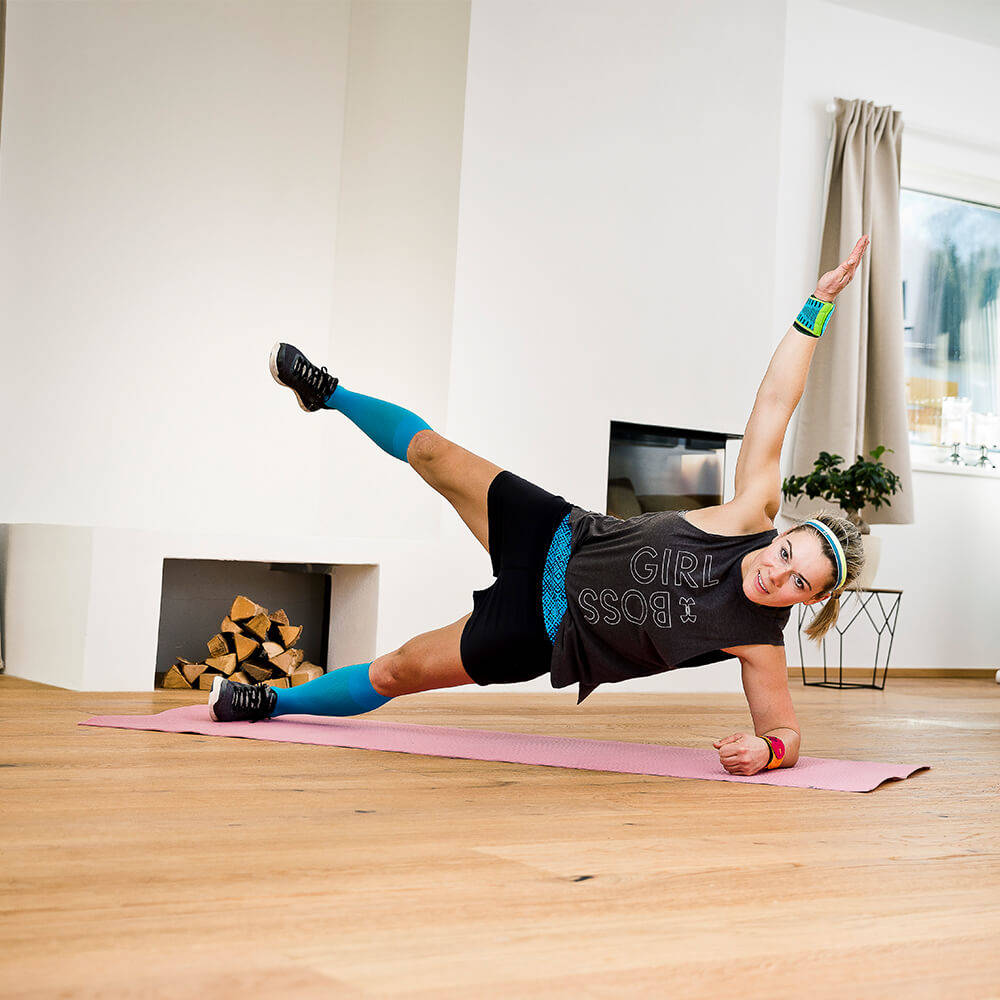
Tuck (Squat Variation)
At first glance, it’s easy to see why this would be an ideal exercise for skiers, as the tuck position mimics the typical squatting position skiers use during a downhill ride. Additionally, it helps strengthen thigh muscles and adds flexibility to your knees and hips.
Needing more knee stability? Our Sports Knee Support (worn below) uses medical standard compression to enhance blood circulation and prevent excessive strain.
To do this:
- Spread your feet shoulder-width apart with your arms together in front of you.
- Squat down until your lower and upper legs reach a 90-degree angle at the knee.
- Tuck your elbows, arms and shoulders into your body as closely as possible.
- Maintain this position for 20-40 seconds before standing up. Repeat this exercise three times.
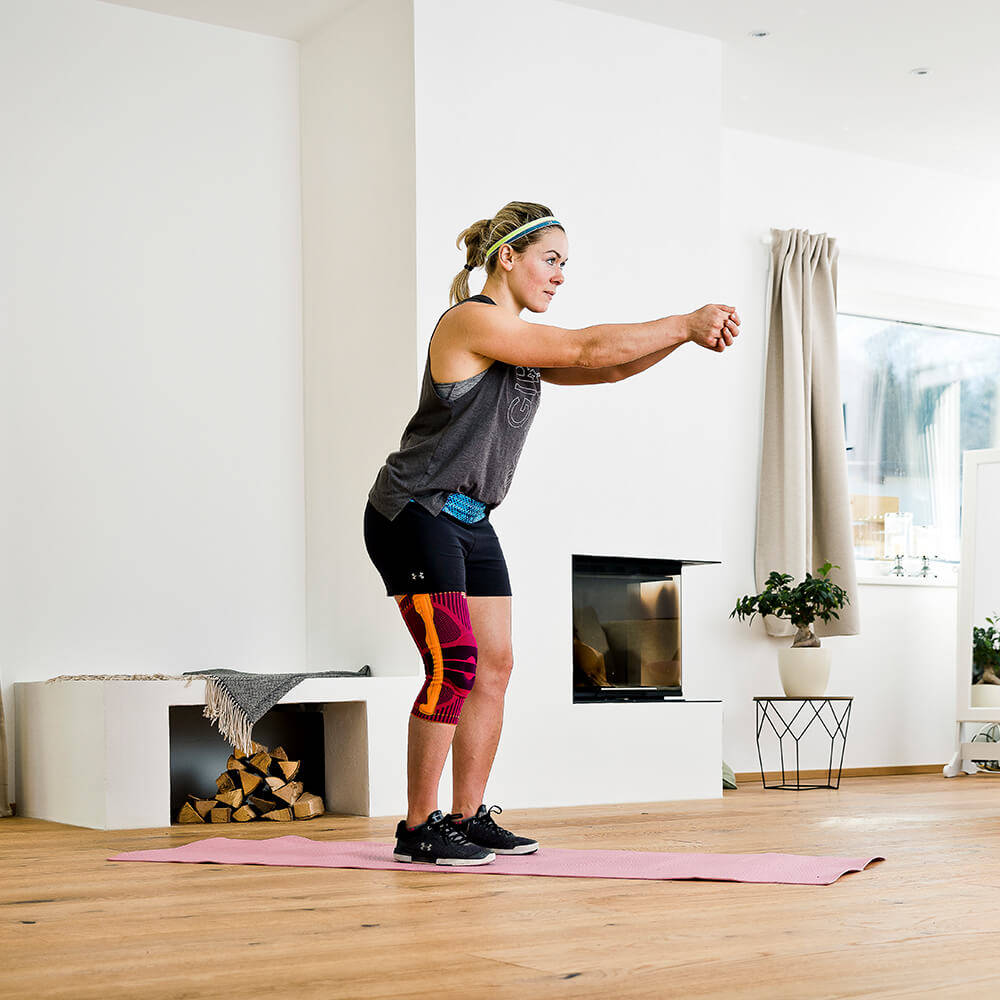
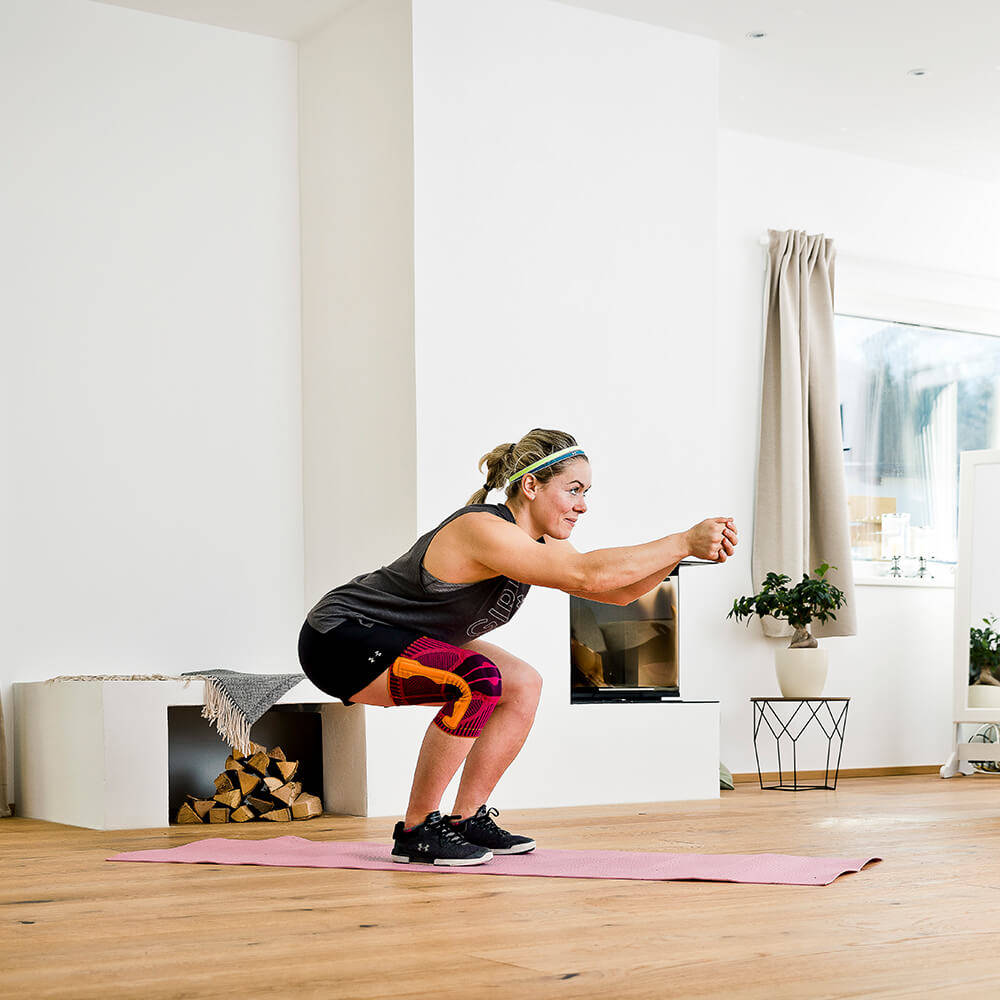
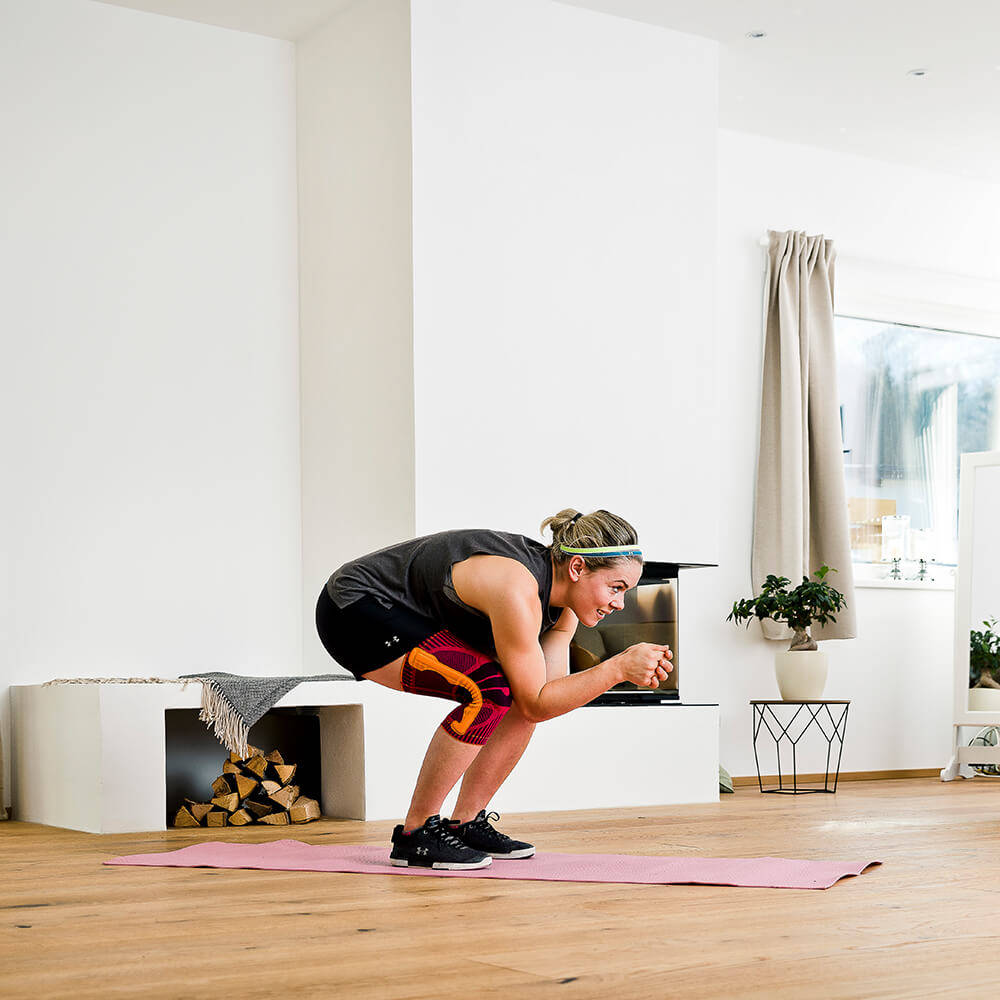
Sprinting in Place (Tapping)
The sprinting-in-place exercise can be used for a variety of sports, as it trains the central nervous system and the ability to form motion patterns associated with sprinting. But for the purpose of skiing, it can help limit the risk of falls by developing the balance and coordination needed to stay upright.
To do this:
- Stand upright, then slightly bend your knees and upper body.
- Lift your right leg and left arm at the same time, raising your knee to your hips or as high as possible while maintaining your balance.
- Quickly switch to the opposite foot and arm, creating a motion that imitates running in place.
- Perform this exercise as fast as possible for 10 seconds. Rest, then do three more sets.
